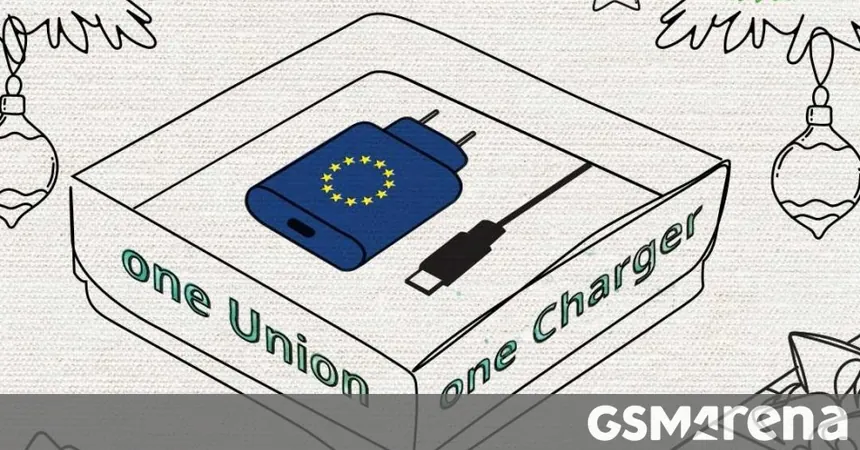
USB-C Charging Becomes Mandatory Across the EU: What You Need to Know Now!
2024-12-30
Author: Benjamin
Introduction
The European Union has officially enacted a groundbreaking directive that mandates the implementation of USB-C charging ports across a wide range of mobile devices. This significant move aims to streamline charging solutions, reduce electronic waste, and combat market fragmentation that has plagued consumers for years.
Implementation Timeline
Starting in 2025, all new mobile phones sold in the EU must be equipped with a USB-C charging port. This directive isn't just about convenience; it's designed to address environmental concerns and the inefficiency arising from the multitude of chargers consumers often find themselves with. From smartphones and tablets to digital cameras and portable speakers, the directive covers an extensive array of rechargeable devices.
Exemptions and Deadlines
Importantly, all 27 EU member countries had until December 28, 2023, to integrate this directive into their national laws. However, laptop manufacturers have been granted an extended deadline until April 28, 2026, to comply with the regulations. High-powered devices, like the PlayStation 5 with its 350W power input, are excluded from these new rules, showcasing a tailored approach to different technology classes.
Proprietary Charging Solutions
Notably, while the directive clearly prioritizes USB-C, manufacturers can continue using their own proprietary charging solutions within their devices. This means that devices already on the market that do not feature a USB-C port can continue to be sold as long as they were available prior to the directive's enactment. Moreover, manufacturers are prohibited from launching new models without a USB-C port, thereby gradually phasing out outdated technology.
USB Power Delivery Standards
One of the directive's key features involves improving charging solutions. Any device capable of being recharged via wired connection and that operates at voltages exceeding 5V, currents over 3A, or power ratings higher than 15W must conform to the USB Power Delivery (USB-PD) standards. This ensures that even cutting-edge devices that employ fast-charging technologies will still abide by a uniform charging protocol.
Consumer Benefits
A major win for consumers is the new policy that allows mobile devices to be sold without an accompanying charger. This initiative is particularly aimed at minimizing waste caused by surplus chargers, which often go unused or are improperly disposed of. Instead, consumers will find easy-to-read graphics on packaging indicating whether a charger is included with the device.
Global Implications
On a broader scale, many are left wondering whether this legislation will inspire other countries and regions to follow suit. While manufacturers may initially view these changes as burdensome, they represent a significant step forward for consumer rights and accessibility. The EU has once again demonstrated its commitment to putting the interests of its citizens above corporate profitability, setting an example for global standards in electronic device regulation.
Conclusion
Keep an eye on this evolving situation, as it could pave the way for a more sustainable and consumer-friendly approach to technology rollout worldwide!









 Brasil (PT)
Brasil (PT)
 Canada (EN)
Canada (EN)
 Chile (ES)
Chile (ES)
 Česko (CS)
Česko (CS)
 대한민국 (KO)
대한민국 (KO)
 España (ES)
España (ES)
 France (FR)
France (FR)
 Hong Kong (EN)
Hong Kong (EN)
 Italia (IT)
Italia (IT)
 日本 (JA)
日本 (JA)
 Magyarország (HU)
Magyarország (HU)
 Norge (NO)
Norge (NO)
 Polska (PL)
Polska (PL)
 Schweiz (DE)
Schweiz (DE)
 Singapore (EN)
Singapore (EN)
 Sverige (SV)
Sverige (SV)
 Suomi (FI)
Suomi (FI)
 Türkiye (TR)
Türkiye (TR)
 الإمارات العربية المتحدة (AR)
الإمارات العربية المتحدة (AR)